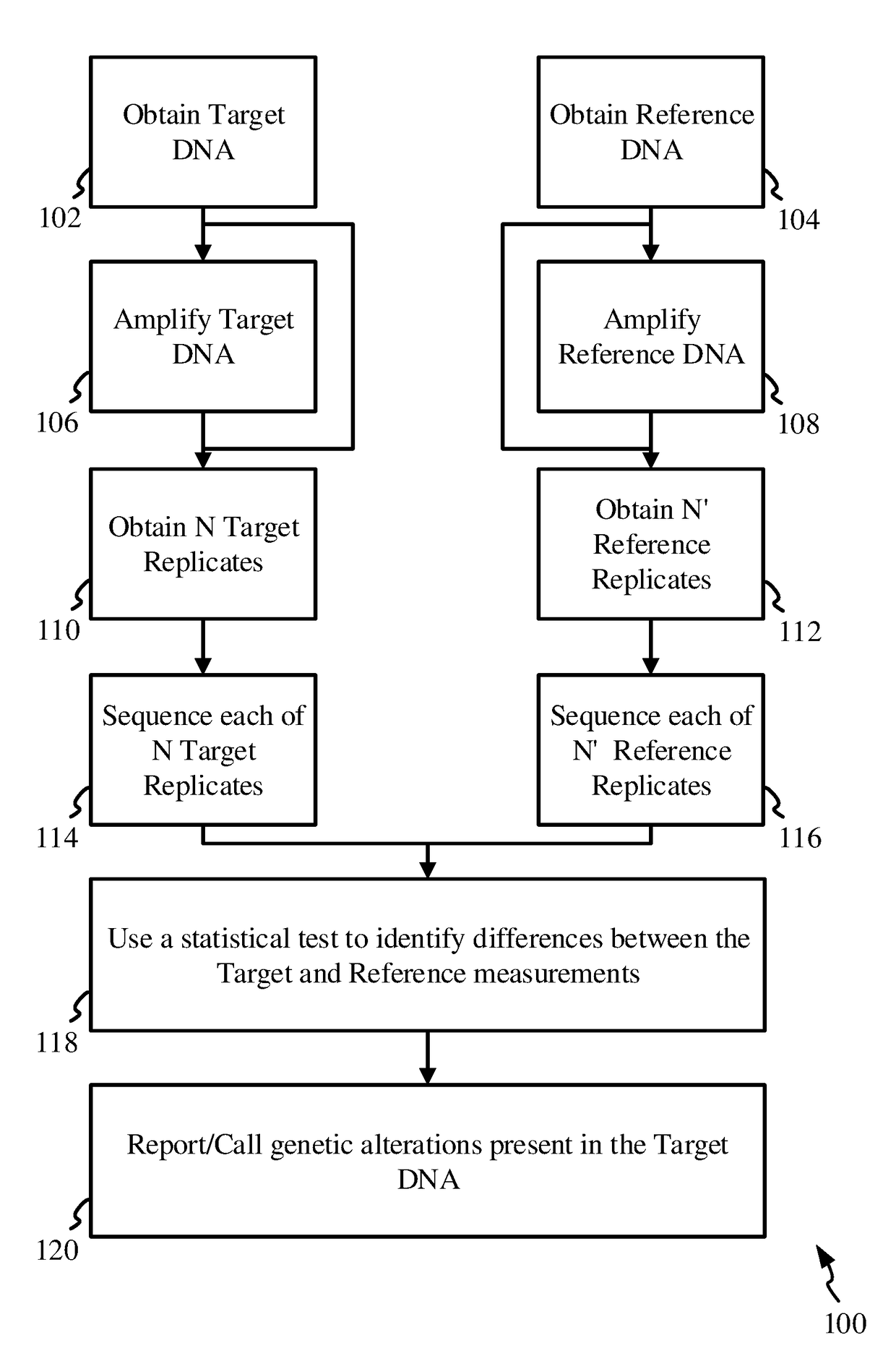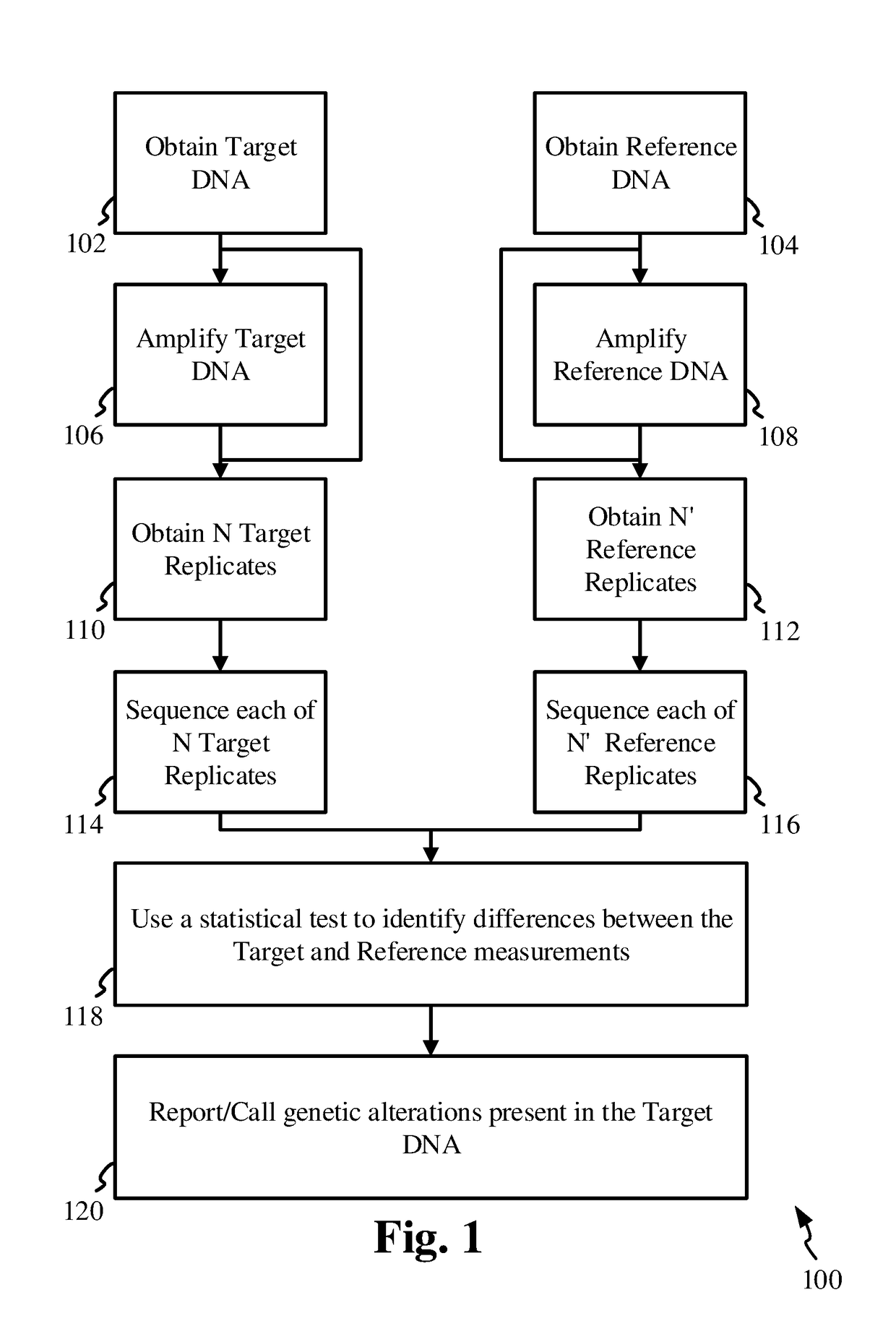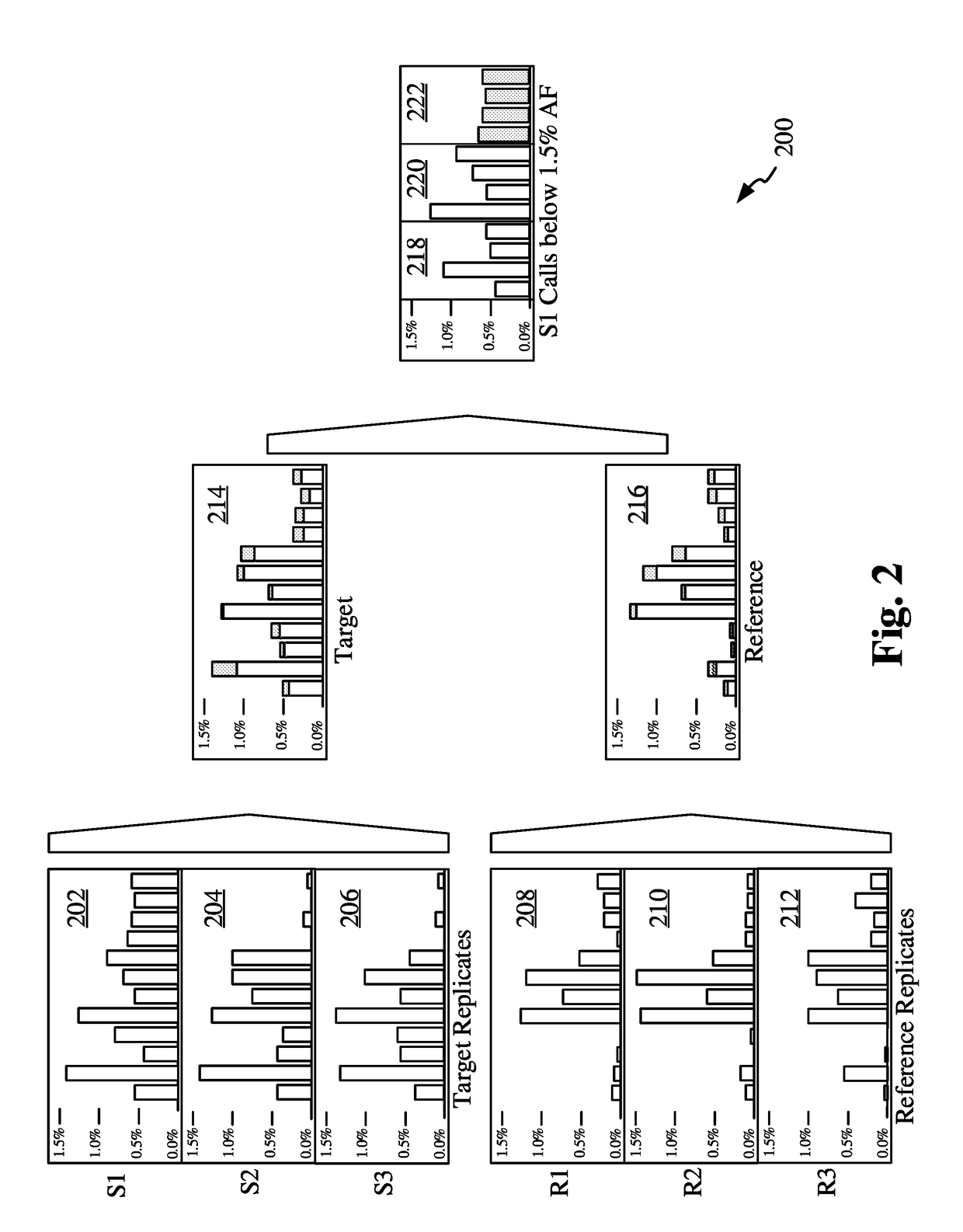Methods and Systems for Ultra-Sensitive Detection of Genomic Alterations
a technology of genomic alterations and detection methods, applied in the field of genetic/genomic alterations or mutation detection, to achieve the effect of low false positive ra
- Summary
- Abstract
- Description
- Claims
- Application Information
AI Technical Summary
Benefits of technology
Problems solved by technology
Method used
Image
Examples
example 1
[0115]This exemplary process entails assembling a profile for the target sample in the form of an allelic profile array or table or a set of lists, also termed simply as a profile array / table of observations / reads. The array could also be implemented as a linked-list, C / C++ “structs” or a Java class, or any other suitable data structure constructs known to those familiar with the art of computer software and programming.
[0116]Let us assume that we are analyzing a sequence with a length of 10 base-pairs (10 bp). Thus the profile array for the target, or target profile array, will contain a set of 40 possible base read numbers, for the 4 possible bases at each position / locus. As mentioned above, the read number or just simply a read or a measurement or an observation at a locus, refers to the total number of reads of a base at that locus, and / or the percentage of reads of the base at that locus out of the total read-depth i.e. AF.
[0117]The target profile array / table X is then represen...
example 2
1. Introduction
[0178]In our example, the DNA mixture consists of the targeted amplicon panel Qiagen GeneRead v2 which is a clinically relevant tumor panel. Targeted amplicon panels are commonly employed to assess genomic regions of interest for clinically relevant mutations in a patient's DNA. In the case of cancer diagnosis and monitoring, the mutations detected have implications for treatment regimens and prognosis. The patient DNA sample comes in the form of a mixture of alleles representing DNA originating from cells of diverse origins.
[0179]The diverse alleles in the mixture may represent heterogeneity in the cancer-derived cell population as well as contamination from non-cancer tissue. Consequently, some alleles of clinical interest may be present in the DNA sample below the limit of detection of the test. This problem may occur in solid tumor biopsies in the case where a clinically relevant subclonal tumor cell population is present below the limit of detection. Furthermore,...
PUM
| Property | Measurement | Unit |
|---|---|---|
| allele frequencies | aaaaa | aaaaa |
| length | aaaaa | aaaaa |
| depth | aaaaa | aaaaa |
Abstract
Description
Claims
Application Information
 Login to View More
Login to View More - R&D
- Intellectual Property
- Life Sciences
- Materials
- Tech Scout
- Unparalleled Data Quality
- Higher Quality Content
- 60% Fewer Hallucinations
Browse by: Latest US Patents, China's latest patents, Technical Efficacy Thesaurus, Application Domain, Technology Topic, Popular Technical Reports.
© 2025 PatSnap. All rights reserved.Legal|Privacy policy|Modern Slavery Act Transparency Statement|Sitemap|About US| Contact US: help@patsnap.com



